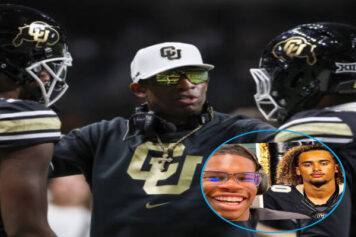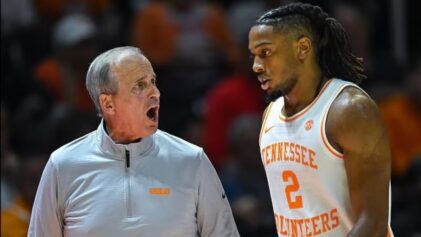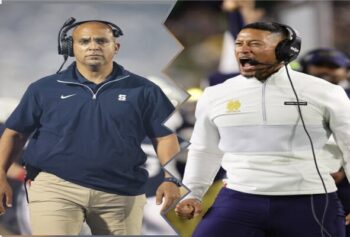Jeff Craddock had lost his mind.
The head coach at Tarboro High School, Craddock did not play Todd Gurley as a freshman or sophomore — "People kept asking me, 'Are you crazy?'" he said — but he was far from ignorant of his potential.
“If you think my kid is a three-star [recruit], go try to show me a five-star," Craddock said of Gurley, a 218-pound running back who led the Vikings to back-to-back North Carolina state titles. "Everyone said after Georgia signed Keith Marshall, they had signed the No. 1 back in the nation. But after Todd committed, I told Coach [Mark] Richt, 'Now you've signed the No. 1 running back in the nation."
Craddock had a point back then. The entire country is listening now. With 536 rushing yards and nine touchdowns, he leads all SEC rushers as a true freshman, setting a record-breaking pace through five games. Along with Marshall (428 yards, five touchdowns), the youngsters compose "Gurshall," the Bulldogs' backfield hat tip to past greatness.
Gurley and Marshall are the latest examples in a recent trend: True freshman running backs taking college football by storm. The SEC, in particular, has capitalized on the movement. Since 2009, four true freshman running backs have finished in the top-10 in SEC rushing — Trent Richardson, Marcus Lattimore, Michael Dyer and Isaiah Crowell — more than all other AQ conferences combined. Gurshall might add two more names to that list.
"Historically, a lot of freshman backs have come in and done well. It's one position that tends to lend itself to that type of thing happening over and over again," Richt said. "If you just turn to them and hand them the ball with a little bit of space, they're going to do some good things if they've got that gift to begin with."
In other words, if you sign a Trent Richardson, get out of your own way.
Jeff Craddock was not insane — it's impossible to argue with three state rings — but SEC coaches like Steve Spurrier and Nick Saban would be not to play the best player, regardless of age. The stakes are too high. That being said, even Gurley can hardly fathom his immediate stardom: "I think about that all the time, just like, 'Yo, this is crazy.'"
STIFF ARM SUSPECTS
The Suspects does not acknowledge name recognition, positional bias, team affiliation or media favorites for its weekly Heisman update. Players earn a spot based on production – and production alone – against quality opponents. This week a Mountaineer enters another statistical stratosphere while two dual threat signal callers play catch-up along with everyone else.
Geno Smith, West Virginia, QB: The world has been properly introduced to Smith, who is but one signature motion away from starting a "Geno-ing" movement. The top Suspect's numbers are on pace to obliterate national records — leading the country in total offense, passing efficiency and touchdowns (21) — and don't expect Big 12 defenses to tighten up. If Geno carves up the Longhorns like he did Baylor, you can pretty much punch his ticket to New York. Next game: No. 11 Texas
Braxton Miller, Ohio State, QB: It's time Miller gets his due, for he has carried the Buckeyes' offense this season. With a solid performance in a win over ranked Michigan State, the electrifying signal caller finally gets full credit for ranking in the top-10 in both rushing (577 yards) and total touchdowns (15). Urban Meyer thinks Miller is more talented than that Tebow guy people are talking about, which is saying something considering his collegiate credentials. Next game: No. 21 Nebraska
E.J. Manuel, Florida State, QB: Manuel no longer boasts the most impressive offensive display of the season — Smith might stake that claim for the next decade — but second-best is not bad. The Seminoles' leader put together a steady performance in a too-close-for-comfort game against South Florida. His 957 total yards against AQ conference teams still rank top-10 nationally, but he will need to produce bigger numbers to keep pace with other leading Suspects. Next game: N.C. State
Raising Suspicion: Kenjon Barner (Oregon); Jarvis Jones (Georgia); Manti Te'o (Notre Dame); Todd Gurley (Georgia); Stefphon Jefferson (Nevada); Terrance Williams (Baylor); Stephon Tuitt (Notre Dame); Collin Klein (Kansas State); Demontre Moore (Texas A&M); DeAndre Hopkins (Clemson)
THE FIFTH WATCH
The Watch is your weekly slate of top games, plus one highly-ranked team that needs to be on high alert. This week sees two top-10 SEC clashes, a Texas shootout and some purple-clad Huskies going duck hunting.
LSU at Florida: This is unexpected. While Les Miles' Tigers were projected by some to be the nation's top team, they have slid back to No. 4 in the AP Poll, while the surprising Gators have jumped up 13 spots. Florida quarterback Jeff Driskel is much improved (211.5 yards per game, five touchdowns), getting it done both through the air and on the ground. LSU is not Tennessee, though. This will turn into a defensive battle, with the Tigers bringing more firepower. Pick: LSU
Georgia at South Carolina: The second top-10 SEC matchup of the weekend, an ever-entertaining Bulldogs-Gamecocks series will likely decide the SEC East division. Both teams are 5-0. Fifth-ranked Georgia looks more explosive, offensively. Both defenses create havoc, with No. 6 South Carolina's bookend Jadeveon Clowney leading a more consistent unit allowing just 11.2 points per game. On paper, this is the closest matchup college football has provided this season. The Watch will stick with its preseason hunch. Pick: South Carolina
West Virginia at Texas: There's a lot of talk about Geno, but Texas' David Ash is the bigger surprise. Coming out of a spring quarterback battle, Ash now trails only Smith in passer efficiency (184.0) and has the 11th-ranked Longhorns dreaming big. Texas is allowing 6.19 yards per play — second-worst in the Big 12 behind, you guessed it, Baylor — so Manny Diaz better devise a scheme to slow down the Mountaineers, or else they'll be writing depressing letters home like Ole Miss. Pick: Texas
Nebraska at Ohio State: There was once a discussion whether Braxton Miller or Taylor Martinez could become efficient passers. Now, they're the top two quarterbacks in the Big 10 (you're getting warmer, Matt McGloin). Martinez is good, but Miller is the key. The Blackshirts are allowing 152.8 rushing yards per game, so stopping the nation's ninth-leading rusher — who can also throw the ball at any moment — won't be simple. No. 12 Ohio State is rolling under Urban Meyer. Pick: Ohio State
ON WATCH: This might turn into a blowout (remember Arizona?), but The Watch has been on the Huskies' bandwagon since preseason practice, so abandoning ship at the first sight of Marcus Mariota seems weak. The second-ranked Ducks are explosive, but Washington proved against Stanford that it can hang with Pac-12 heavyweights. Chip Kelly will want to put this one away early, but his defense will need to keep Keith Price from getting comfortable to avoid a last-one-to-score-wins scenario.
THIS IS WHY…
Within the discussion of sports figures going broke, John L. Smith deserves little pity.
Yes, it is true that a plummeting economy came back to bite Smith, Arkansas' interim head coach who amended documents in his federal bankruptcy filing to show that he owes $40.7 million, but has just $1.3 million in assets. That total is up from the $25.7 million in debt he filed in September. Yes, it is a trying time for a man who just lost his brother and is a laughing stock around college football for his quirky sayings and ridiculous antics. It's obvious he's a man that confronts with personal hardship with laughter, but very few are laughing amidst a1-4 season.
Smith is a grown man, who, in coincidental parallel to the focus of ESPN's 30 for 30 documentary "Broke" that aired on Tuesday, spent well beyond his means. However, unlike Andre Rison, Bernie Kosar and others "Broke" focused on, Smith's income levels follow the traditional cycle of earnings. This was not a 21-year-old young man from a low socioeconomic background without a proper education in a lucrative, but brutal job market; this is a 63-year-old man with a life's worth of experience who made a poor decision.
Is it a joyous occasion to see someone in financial strife? Of course not. But Smith and his $40.7 million in debt are not part of an epidemic; he is an isolated incident.
Perhaps the most valuable aspect of "Broke" — a depthless take on the athletes' financial crisis, which featured the What while briefly skimming the surface of Why and How — was that it illustrated the scope of the issue and reignited a discussion of why professional athletes hemorrhage money. And, for NFL players, those thrust into the most volatile situation in pro sports, it starts before high school and up through college. These young men, already stripped of their rights to be properly compensated in the NCAA system, are also shortchanged on the most valuable form of payment they receive for their services: Education.
"Student-athletes" in today's university system are all too often steered away from strenuous majors and classes in order to remain eligible for on-field competition. Want to take organic chemistry? Too bad, we can't risk you failing.
Young men needing to learn how to make paydays of $10 million carry past their 25th birthday — NFL players average around three and a half years of employment — should be required to take in-depth investment and finance classes. Instead, they are advised to take the quirky horticulture teacher that offers an 'A' if you keep a plant alive. That way, Star Player X can keep his team alive on Saturdays. And then, hopefully, make it to Sundays.
This is why it is actually John L. Smith's players we need to be more concerned about. How will the education these "student-athletes" are receiving prevent an all-too-common downfall? Is it setting them up for future success in professional sports (or elsewhere), or is it simplykeeping them eligible so programs can boast bloated APR rates?
This is why producing documentaries on down-and-out athletes is beneficial to spark a conversation, but if that debate dies without change it will be for nothing but DVR fodder. This is why the prevention of pro athletes' economic issues — or, perhaps especially, those who will never get paid for their on-field gifts — extends far beyond rookie symposiums and shady financial advisors. It reaches back to collegiate classrooms.
And this is precisely why, as a system, president Mark Emmert and the NCAA need to share the burden of ensuring the future prosperity of the labor it profits off of.



